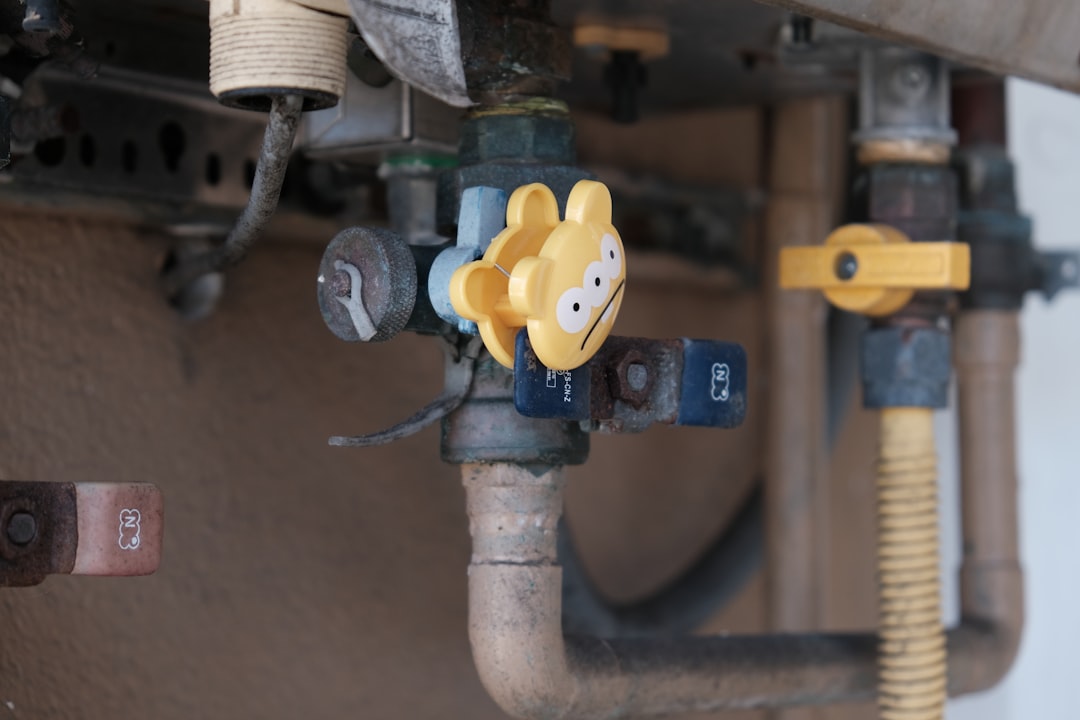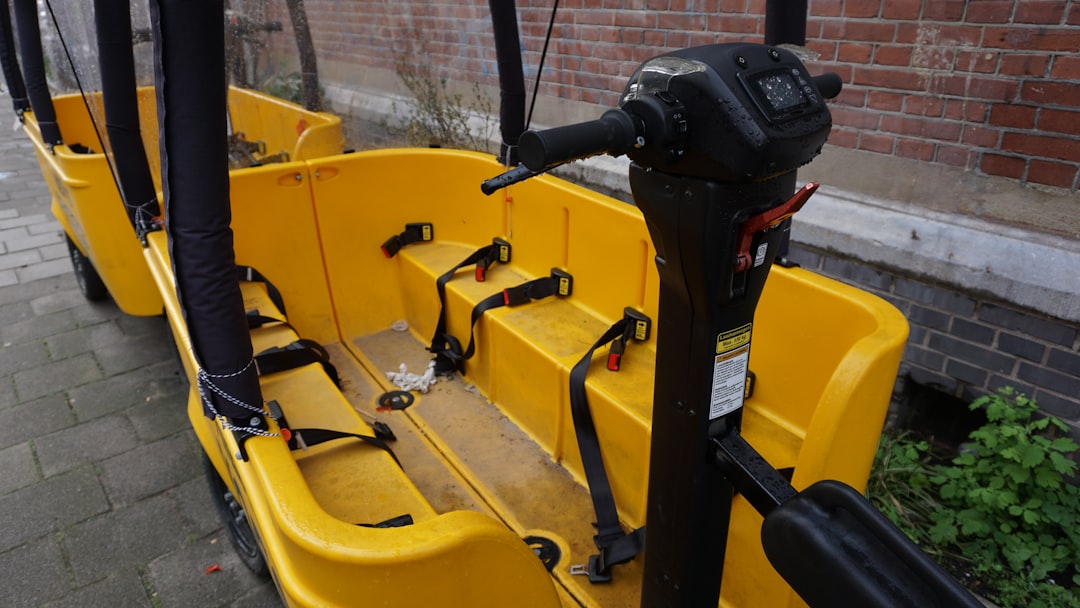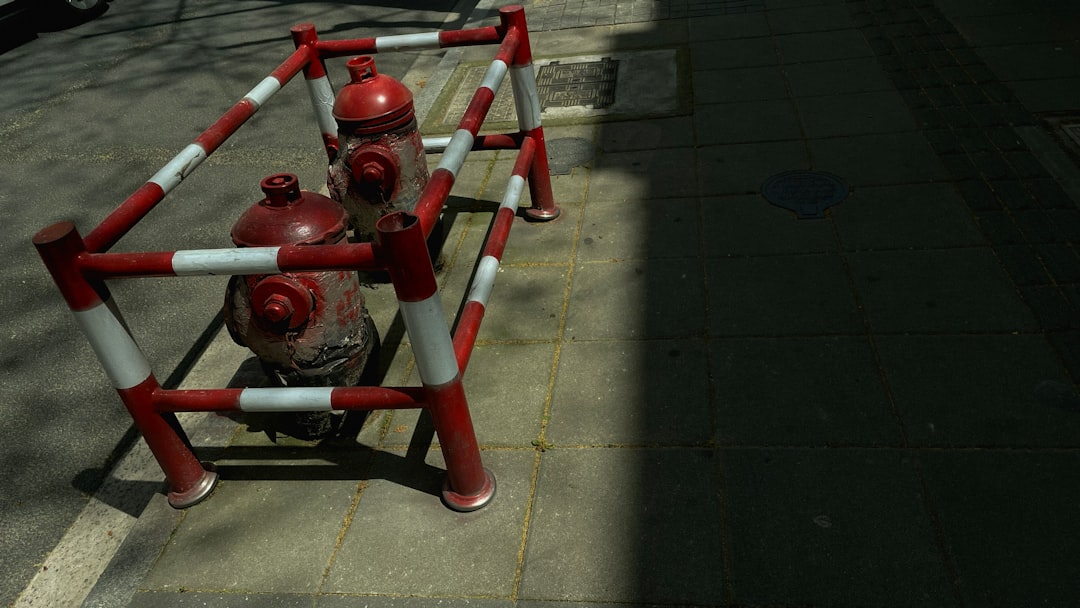

Engage prospects with a scan and streamline customer engagement with FREE QR code marketing tools by Sona – no strings attached!
Create a Free QR CodeFree consultation

No commitment

Engage prospects with a scan and streamline customer engagement with FREE QR code marketing tools by Sona – no strings attached!
Create a Free QR CodeFree consultation

No commitment
Sump pump contractors face a persistent challenge: critical, high-value leads often slip through the cracks when traditional methods are used to manage inquiries and track service requests. In the fast-paced environment of home flooding or urgent basement repairs, customers demand instant answers and immediate action. Yet, static brochures, phone directories, and paper scheduling can leave both prospects and businesses frustrated by slow response times and missed follow-ups. This loss of high-intent prospects is particularly costly, as competitive contractors can engage urgent leads sooner and win projects by being the first to respond.
QR codes now serve as a seamless bridge connecting offline physical assets such as yard signs, warranty stickers on installed units, or emergency door hangers to a frictionless digital experience for homeowners. With a simple scan, contractors can direct homeowners to schedule forms, maintenance checklists, troubleshooting guides like this pump manual, or tailored FAQs that clarify sump pump installation costs and solutions during times of stress. These instant-access channels not only remove barriers for customers in need, but also give contractors new visibility into every engagement, helping transform previously anonymous or untracked inquiries into actionable, high-value opportunities. This forms a core tactic in qr codes in marketing.
By leveraging QR technology, sump pump contractors can finally measure and optimize the entire service journey, identifying and nurturing leads before they convert or seek alternative providers. This article demonstrates data-driven strategies for QR code deployment, from capturing more timely leads after major rain events to surfacing upsell and review opportunities at the exact moment a homeowner is most engaged. This enables superior customer experiences and measurable growth for sump pump businesses.

Despite growing demand, many sump pump contractors lose high-value prospects due to outdated, manual lead tracking and missed opportunities for timely follow-up, especially in the chaos of storms or flooding emergencies. Homeowners may glance at a flyer or recall a local contractor, but without a direct, digital way to act, their intent often goes unrecorded or quickly shifts to a more accessible competitor.
Modern solutions allow contractors to bridge this critical gap. By embedding QR codes on physical touchpoints like appointment cards, equipment stickers, and emergency signage, businesses instantly convert offline interest into qualified digital leads, ensuring no opportunity goes unnoticed. QR codes reduce friction compared to analog processes like paper brochures, manual phone trees, and handwritten service requests. They replace slow, error-prone steps with instant actions that trigger scheduling, intake forms, or live chat support.
With a centralized platform like Sona QR, you can spin up dynamic codes, update destinations on the fly, and route scans to the right experience based on situation and urgency. The result is a faster path from interest to action, fewer missed calls, and stronger outcomes during those mission-critical minutes after a storm. Start creating QR codes for free.

In the sump pump industry, a lack of real-time data and insufficient visibility into who is engaging with your marketing leads to costly outcomes: high-intent prospects slip through the cracks, never making it into your CRM or triggering follow-up. This creates blind spots in your marketing performance and opens the door for more agile contractors to capture those leads. QR codes close this gap by turning every physical asset into a digital entry point, capturing intent precisely when it happens.
Homeowners facing water intrusion are not looking to download apps or search for the right page on your website. They want immediate access to a technician, a scheduling calendar, or a quick troubleshooting guide. QR codes meet them where they are: in the basement, at the control panel, or with a mailer in hand. The codes initiate instant actions, which can be tracked, analyzed, and optimized over time.
For the sump pump contractor, QR codes are a low-cost way to upgrade field operations, speed up response times, and collect the data you need to invest wisely in growth.

Choosing the right QR code format aligns your homeowner’s next step with your business objective. In a service environment where urgency and clarity matter, each format serves a distinct purpose and removes a specific friction point in the journey.
Static codes are best for evergreen resources like care guides. Dynamic codes are best for campaigns, promotions, and assets where you need tracking, editability, and real-time routing. As your program matures, most high-value placements should be dynamic, since weather patterns, crew capacity, and offers can shift quickly.
Dynamic QR codes managed through a platform like Sona QR add the ability to A/B test destinations, update content after a storm, and segment reporting by asset type or neighborhood. That flexibility prevents reprinting costs and keeps your assets useful year-round.

Missed opportunities often occur because campaigns are disconnected from the customer’s immediate context and urgency. QR codes create new value when deployed where intent is high and the next step is obvious. In sump pump services, storm timing, basement placement, and neighborhood risk profiles should guide your strategy.
Think about where homeowners are most likely to need you: standing in a damp basement, inspecting a pump after heavy rain, or reading a pre-storm checklist. Placing QR codes thoughtfully at those moments turns curiosity into action, and action into revenue.
Every scan pulls prospects deeper into your funnel while creating identifiable data for nurturing, retargeting, and upsell opportunities. When managed centrally, these placements become a repeatable growth engine rather than a one-off tactic.

The gap between initial offline interest and digital engagement often causes slow responses, missed review requests, and lost maintenance appointments. QR codes remove this gap by mapping real-world moments to digital actions you can track and optimize. The best use cases match location, urgency, and intent.
Consider building your program around a few high-impact workflows, then expand as you learn which placements and messages perform best for your region.
Advanced programs tie each action to audience segments. For example, customers who scan for care tips can receive educational content and a maintenance plan offer, while emergency scanners trigger instant dispatch and follow-up for sump basin cleaning or backup battery installation. Over time, this precision improves close rates and lifetime value.
One of the largest inefficiencies in offline marketing is not knowing which impressions actually convert into actionable leads. Each QR scan is a measurable signal of intent. When your codes are unique to channels and use cases, you automatically segment your audience by what they want and when they want it.
This segmentation enables tailored messaging that respects urgency and context. Emergency scanners should receive immediate service options and a short intake process. Maintenance scanners should receive education and incentives for annual plans. Post-install scanners should receive review prompts and upgrade offers.
With Sona QR, scan data becomes a live signal you can use to market smarter. Your teams respond faster to emergencies, your campaigns prioritize high-intent audiences, and your reporting shows which offline investments truly pay off.
Disconnected marketing creates inconsistent messaging and wasted spend. QR codes unify the experience by connecting physical touchpoints to digital workflows with trackable outcomes. For sump pump contractors, this means your mailers, signage, and install docs all feed the same centralized system.
A connected program also simplifies management. Instead of juggling dozens of static assets, you control dynamic destinations and campaign rules from one dashboard. When a major storm rolls in, you can update every emergency QR to route to surge scheduling and live chat without reprinting anything.
A platform like Sona QR centralizes code creation, routing, and reporting. This gives you a single source of truth for offline attribution and simplifies the handoff from marketing to operations.
Launching a high-performing QR program requires a disciplined approach. Treat QR codes as part of your core marketing and operations infrastructure, not as a one-off. The steps below will help you go from idea to measurable results with fewer surprises along the way.
Start with one or two critical use cases so teams can learn fast. As you gather scan data and feedback from the field, iterate on placements, calls to action, and follow-up flows. The biggest gains often come from small improvements in accessibility, message clarity, and response speed.
Identify the moments where your team most often misses timely engagement, such as emergency repair requests, maintenance follow-ups, and post-install reviews. Prioritize situations where a scan can remove steps and accelerate action. For example, deploy a QR code labeled “Scan here for urgent repair” on wall stickers near the sump basin and a separate code labeled “Scan to schedule your annual checkup” on the post-install folder.
Clarify the business outcome for each use case. Emergency codes should reduce time-to-dispatch and increase booked jobs during storms. Maintenance codes should grow your service plan base and reduce no-shows. Review codes should raise your average review count and rating within a set timeframe.
Pair each use case with the right QR type. Use static codes for fixed resources like evergreen care guides or safety instructions. Use dynamic codes for any asset that needs tracking, editing, or campaign optimization, such as emergency routing or seasonal offers.
Dynamic codes let you change destinations without reprinting. During severe weather, you can point all emergency stickers to a surge scheduling page and live chat. After the storm, you can switch those same codes to a maintenance inspection offer and collect addresses for route planning.
Design codes with clarity and contrast. Include a clear call to action such as “Scan for 24/7 help” or “Scan for free estimate,” and ensure scannability in dim basements. Test on multiple phone models, from multiple angles, and in the lighting conditions where the code will live.
Brand your codes and frames for recognition, but prioritize readability. Use short, benefit-focused language and add directional arrows when placement might be confusing. Field-test with technicians and a few customers before large-scale rollout, then refine based on feedback.
Map asset types to pain points. Apply emergency request codes to in-basement stickers and storm-response mailers. Apply maintenance scheduling codes to install folders, fridge magnets, and annual reminder postcards. Use review and referral codes on completion certificates and lawn signs.
Roll out in waves and monitor early results. Start with a few neighborhoods or store partners to validate uptake. Train technicians to mention the codes during handoff. Small adjustments to placement height, lighting, and framing often yield noticeable lifts in scan rates.
Consolidate scan data from all assets into one dashboard. Analyze which placements generate the most scans and conversions, how rain events impact engagement, and which CTAs drive higher completion rates. Look at scan-to-booking time to identify where customers stall.
Use insights to refine future campaigns. A/B test landing pages and CTAs. Shift budget toward the channels and neighborhoods that produce revenue, not just scans. Share findings with field teams and celebrate wins to build momentum.
Lack of actionable insight into engagements that drive revenue is a frequent challenge. QR code analytics close this gap by logging every scan event and attributing downstream actions. The goal is not just to count scans, but to understand how engagement progresses into booked appointments, completed jobs, and repeat business.
To build a reliable attribution model, connect your scan data to your CRM and scheduling tools. This creates a full-funnel view: which assets generated the scan, whether the visitor completed a form, how long it took to receive a booking confirmation, and the final job value. Over time, you will identify which placements and messages consistently drive profitable outcomes.
Sona QR captures granular scan data and routes it into your marketing and sales stack. With Sona, you can take the final step of connecting scans to pipeline and closed revenue using identity resolution and multi-touch attribution. This elevates QR from a convenience feature to a core part of your performance marketing strategy.
Contractors who maximize QR ROI treat field learning as a loop. They test placements, review analytics, adjust messaging, and train teams to promote scanning with confidence. The result is steady improvement in scan rates, conversion, and customer satisfaction.
Focus first on the media you already use, then introduce new assets where performance data suggests opportunity. For example, if door hangers outperform mailers in certain neighborhoods, add more versions and test CTAs tied to weather alerts, insurance documentation, or community discounts. For broader playbook ideas, scan through plumbing marketing ideas.
Consistency and iteration are the keys. Every improvement in accessibility, clarity, or routing can compound across a busy season into significant revenue gains.
Contractors across water management and home services have used QR codes to reclaim missed opportunities and create stronger customer experiences, including pump maintenance QR. The most successful programs share common traits: clear CTAs, well-chosen placements, and integrated follow-up workflows. For peer discussion on practical applications, see this community thread on QR with clients.
Think beyond the typical brochure. Consider how neighbors see your trucks, how DIY shoppers make decisions, and how community groups share preparedness information. Each scenario is a chance to turn ambient awareness into measurable action.
These examples demonstrate how QR codes create a cohesive offline-to-online journey. What matters most is aligning the scan with a clear benefit and a next step that respects the homeowner’s situation.
QR codes succeed when they are easy to find, easy to scan, and promise clear value. They fail when buried in clutter, printed too small, or routed to generic pages that do not solve the customer’s immediate problem. A few tactical adjustments can prevent the most common issues.
Invest in field testing and make it part of your process. If a sticker sits in a dark corner, add a reflective frame or move it closer to a light source. If a code competes with multiple phone numbers and logos, remove distractions and amplify the CTA. In basements with condensation, use moisture-resistant materials and recheck scannability after installation.
For sump pump contractors seeking to grow, QR codes represent a shift from guessing about lead quality and timing to knowing, measuring, and acting on real signals of homeowner interest. The payoff is faster response, more consistent follow-up, and higher lifetime value.
With systems that track every step from scan to conversion, your team can maintain messaging consistency, nurture leads across the buying journey, and unlock new upsell, review, and referral opportunities. Adopting QR code technology as part of an offline-to-online marketing stack is more than an operational update; it is a strategic advantage that elevates reputation, responds faster to market needs, and drives measurable revenue growth for your sump pump business.
QR codes have transformed the sump pump contractor industry from traditional service outreach into dynamic, measurable growth opportunities. Whether it’s streamlining customer acquisition, enhancing service transparency, or enabling faster emergency responses, QR codes eliminate cumbersome manual processes by delivering instant, mobile-friendly access to key information and real-time engagement data. This turns every service call, flyer, or equipment tag into a powerful conversion tool.
Imagine your customers scanning a code to immediately schedule maintenance, access troubleshooting guides, or verify service history—all while you track which touchpoints drive the most engagement and revenue. With Sona QR, you can create dynamic, trackable QR codes in seconds, update your campaigns instantly without reprinting materials, and connect every scan directly to your bottom line. No missed leads, no guesswork—just smarter, more profitable customer interactions.
Start for free with Sona QR today and turn every scan into a new opportunity for growth and customer loyalty.
Choose a contractor who uses modern tools like QR codes for fast response, tracks leads effectively, provides clear communication, and offers timely service during emergencies.
QR codes provide instant access to scheduling, maintenance guides, emergency support, and troubleshooting, improve lead tracking, speed up response times, and enable data-driven marketing.
Installation cost details can be accessed instantly through QR codes that link to cost calculators and tailored estimates, helping homeowners understand pricing during stressful times.
While the article does not list specific signs, QR codes can direct homeowners to troubleshooting guides and maintenance checklists to identify and address pump issues promptly.
Regular maintenance is recommended, and QR codes on equipment or mailers can help homeowners schedule annual checkups and battery replacements to prevent emergencies.
Use Sona QR's trackable codes to improve customer acquisition and engagement today.
Create Your FREE Trackable QR Code in SecondsJoin results-focused teams combining Sona Platform automation with advanced Google Ads strategies to scale lead generation

Connect your existing CRM

Free Account Enrichment

No setup fees
No commitment required

Free consultation

Get a custom Google Ads roadmap for your business






Launch campaigns that generate qualified leads in 30 days or less.
